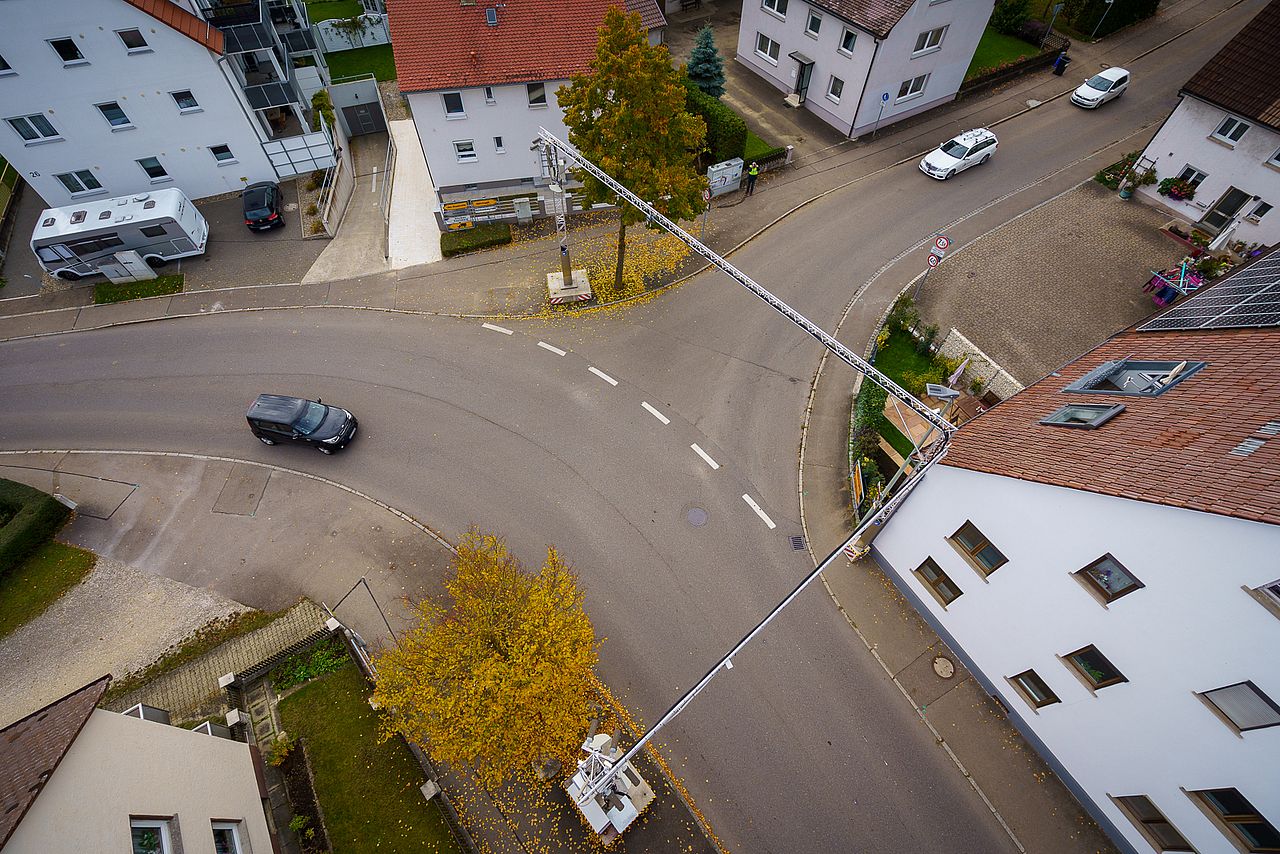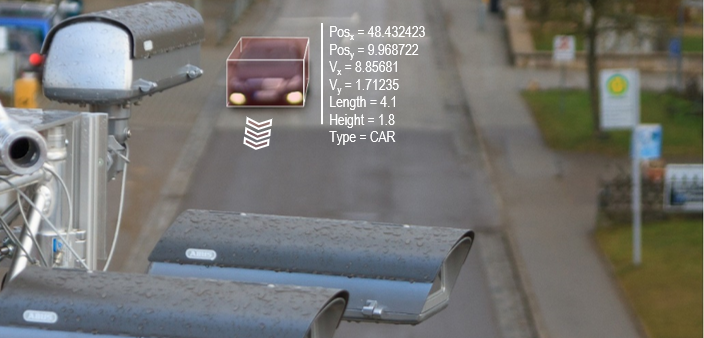Connected Driving / Connected Infrastructure
Besides the atutomation of vehicles, the networking of traffic participants is the second major change in our traffic systems that results from digitalization. This networking prmoises the user to experience higher comfort and safety, reduction of emissions, and travel time optimization.Furthermore, especially in complex urban environments, the networking significantly supports atutomation of the traffic. For example, connected infrastructure sensors can help an automated vehicle to detect objects in areas that are occluded to the onboard sensors.
Research Focus
The reserach focus of the research group "Connected Driving / Connected Infrastructure" of the Institute of Measurement, Control and Microtechnology at Ulm University builds on and extends the works in Automated Driving. A strong emphasis is set on supporting traffic participants with connected infrastructure. Nucleus of our research is the question on suitable system architectures that allow to use different communication techniques, like LTE/5G cellular mobile networks and ad-hoc networks (e.G. ITS-G5) in parallel.
The modules and components of these architectures are in the focus of our research. Based on our methodological research in probabilistic data processing, we work on the detection of traffic participants with infrastructure sensors and the respective environment modelling. This model can than be provided to connected users. Challenges are the association of the different measurements to the actual objects, the high complexity due to the large number of sensors and the respective size of the surveilled area, and the simultaneous need for a minimal latency caused by data processing. Additionally, we work with a generic data interface to allow for a simple inlcusion of almost arbitrary sensors. To copmensate for latencies in communication and data processing and to allow for predictive analysis of the traffic situations, we also work on suitable prediction techniques for this environment model. Based on this, we further research on methods to initiate and coordinate cooperative maneuvers by the infrastructure.
On the vehicle side, this topics are complemented by research on predictive motion planning and exection of the cooperative maneuvers based on the infrastructure information. Besides maneuver planning and control using the external data, methods to assess the reliability of the received data based on very small sample sizes is another important research topic of us.
Pilot Installation und Test Vehicles
The Institute of measurement, control and microtechnology operates a pilot installation with infrastructure sensors to evaluate and improve our research in real traffic. As an extension for the flexible usage also in other traffic scenarios, mobile infrastructure senor units have been built up. Additionally, the institute has several automated test vehicles, which have been extended by communication units to allow for practical testing of connected traffic systems. This gives us the opportunity to prototypically test our developed methods for applicability in the relevant environment directly.


